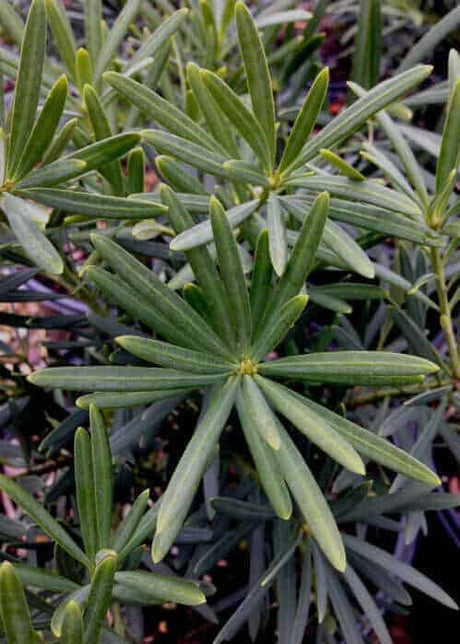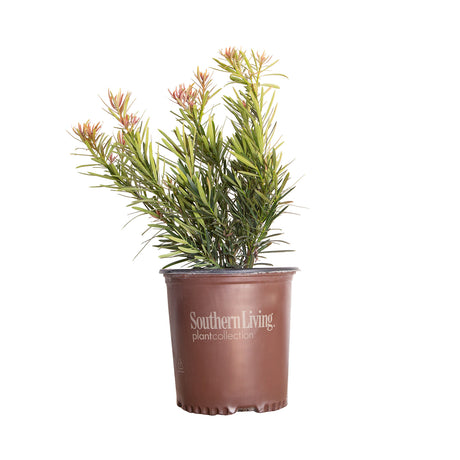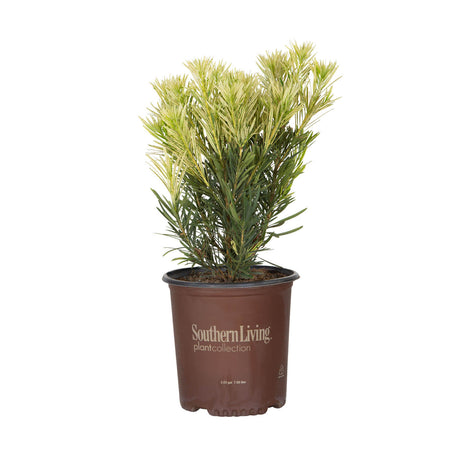Maki Podocarpus
Maki Podocarpus is backordered and will ship as soon as it is back in stock.
Couldn't load pickup availability
Description
Description
Maki Podocarpus, or Podocarpus macrophyllus' Maki,' is a beloved choice among gardeners. This evergreen shrub, part of the Podocarpaceae family, hails from Japan and China. Its unique features and numerous benefits make it a standout in any garden or landscape.
This plant is known for its dense, compact growth, reaching 8-10 feet at maturity. The dark green, leathery leaves are narrow and lance-shaped, offering a visually appealing backdrop in any setting. Its dense branching and ease of pruning make it ideal for hedges, screens, or topiaries.
One of the standout features of Maki Podocarpus is its adaptability. It thrives in full sun to partial shade and can tolerate various soil types, including clay, loam, and sandy soils. Once established, it is also drought-tolerant, making it a low-maintenance option for busy gardeners.
Beyond its aesthetic appeal, Maki Podocarpus offers practical benefits. Its dense foliage provides excellent privacy and noise reduction, making it perfect for creating a tranquil outdoor space. Additionally, it serves as an effective windbreak, protecting other plants from strong winds.
Originally from East Asia, Maki Podocarpus has found its way into gardens worldwide, including in the United States. Its striking appearance and versatility make it a valuable addition to any garden or landscape design.
Caring for Maki Podocarpus
Proper care ensures the healthy growth and longevity of your Maki Podocarpus. Here are some guidelines for watering, pruning, and fertilizing:
Watering: Maki Podocarpus prefers moist, well-drained soil. Water deeply and thoroughly, allowing the soil to dry slightly between waterings. Increase watering frequency during hot summer months to prevent drought stress. Avoid overwatering to prevent root rot.
Pruning: Pruning helps maintain the desired shape and size of your Maki Podocarpus. The best time to prune is late winter or early spring before new growth appears. Remove dead, damaged, or diseased branches. For bushier growth, selectively prune branch tips. Avoid heavy pruning, as recovery may take longer.
Fertilizing:
- Feed your Maki Podocarpus in early spring with a balanced slow-release fertilizer.
- Follow the manufacturer's instructions for application rates.
- Avoid fertilizing during winter when the plant is dormant.
Regular fertilization will enhance its vigor and overall health.
Care & Use
Care & Use
Spacing Recommendations
Spacing Recommendations
-
Scientific Name
-
Hardiness Zone7, 8, 9, 10, 11
-
Sun ExposureFull Sun to Part Shade
-
Evergreen or DeciduousEvergreen
-
FeaturesAromatic, Deer Resistant, Drought Tolerant, Heat Tolerant
-
Feature ColorGreen
-
UsesContainer, Border, Hedge, Privacy Planting, Mass Planting
-
Water NeedsWater-Wise
-
Bloom SeasonNone
Growing Zones : 7, 8, 9, 10, and 11









